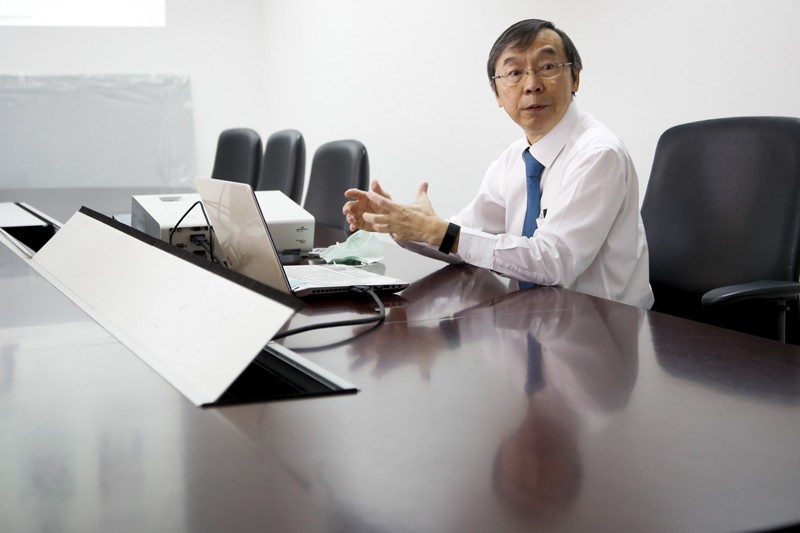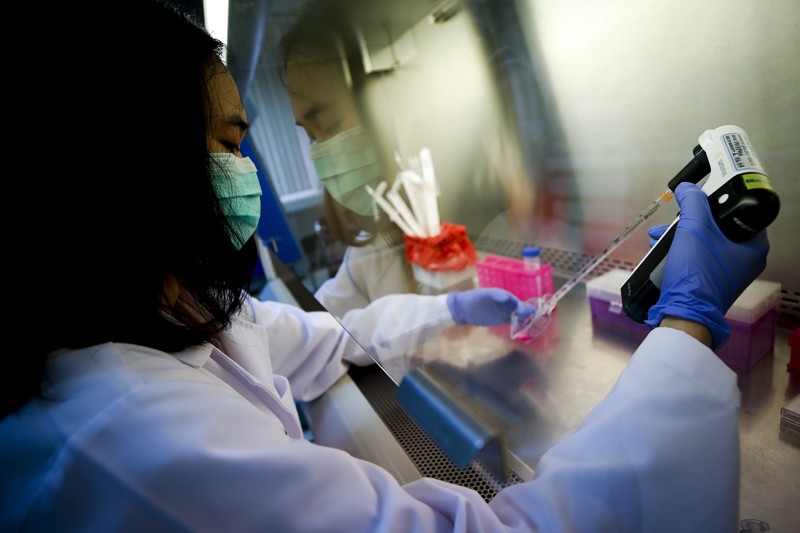Thailand is about to launch human trials of its first mRNA COVID-19 vaccine. If it is successful, the country could emerge as an important supplier of mRNA vaccines in Asia, making it a small but significant player in the dash to adopt the new technology.
Last year saw the launch of the first viable vaccines that use messenger RNA to prompt an immune response, one developed by Pfizer in New York City and BioNTech in Mainz, Germany, and the other by Moderna in Cambridge, Massachusetts. These have proven highly effective against COVID-19, and have so far been given to hundreds of millions of people.
In Asia, home-grown mRNA vaccines are already undergoing trials in China, India and Japan. Thailand is a relative newcomer, but its efforts have increased in urgency as its neighbouring nations across south and southeast Asia suffer both vaccine shortages and renewed COVID-19 surges. Thailand is now recording about 3,500 new infections a day — its biggest spike since the pandemic began.
Nature spoke to immunologist Kiat Ruxrungtham, founder of the Chula Vaccine Research Center at Chulalongkorn University in Bangkok, about his team’s COVID-19 vaccine, called ChulaCov19.
What motivated you to develop your own vaccine?
During the H1N1 influenza pandemic in 2009–10, it took more than a year for Thailand to get vaccines. We wanted to develop and manufacture our own so that when a new pandemic hit, we wouldn’t have to wait. We might be too late to fill the gap in the Thai market with our first-generation COVID-19 vaccine, but we have a chance to compete with second- and third-generation vaccines against emerging variants. Our goal is to produce enough to supply Thailand, and possibly also our neighbours, at an affordable price.
What inspired the shift to mRNA technology?
I founded my vaccine-research laboratory more than a decade ago and we have been developing vaccines against dengue fever, leptospirosis and cancer using many different technologies. In 2017, we invited the pioneer of mRNA technology, Drew Weissman at the University of Pennsylvania in Philadelphia, to speak at our annual forum. We then began working with Weissman on mRNA vaccines for allergies. But when the pandemic hit, we decided to focus on designing a COVID-19 vaccine instead.
The beauty of mRNA vaccines is that they are quicker to produce and can be made at large scales, which reduces their cost in the long run. These vaccines use small pieces of genetic material — mRNA — to tell cells to make specific viral proteins, such as the spike protein that SARS-CoV-2 uses to enter host cells. They can be developed rapidly using information about a virus’s genomic sequence, which means that we don’t need to wait until emerging variants enter Thailand to begin developing vaccines against them.
Tell me about your progress so far.
ChulaCov19 has shown promising results in unpublished preclinical studies in mouse and primate models. We plan to begin phase I clinical trials in people in June, and are already developing next-generation vaccines against the B.1.351 and B.1.1.7 variants of the virus. We are also keeping a close eye on B.1.617, which first emerged in India. We are happy to have come this far, but it has taken us more than a year to enter human clinical trials — almost a year behind major global pharmaceutical companies.
What clinical trials are you planning?
The initial phase I trial will include some 100 people to figure out the appropriate dose for generating a good immune response. A US-based biotech company will probably produce the first batch but, by September, we plan to have the vaccines manufactured by the company BioNet-Asia in Bangkok. If the quality and results are comparable, then our locally produced vaccines will hopefully gain the trust of the government and investors.
Once we pass this milestone, we plan to conduct phase II trials, testing the consistency of response in a few hundred volunteers, and then assessing the safety of the vaccine in some 5,000 individuals. To test efficacy, we will need to conduct phase III trials in tens of thousands of individuals.
How might you get approval for the vaccine without late-stage trials?
The World Health Organization, the US National Institutes of Health and several other organizations around the world are working to determine the level of neutralizing antibodies that a vaccine should induce to provide adequate protection. This ‘correlate of protection’ could be used to assess efficacy without conducting late-stage trials, as is commonly done for new flu vaccines.
We have also asked colleagues in Singapore and Malaysia to send us blood samples from people vaccinated with the Pfizer–BioNTech vaccine, and we will collect samples from people in Thailand immunized with AstraZeneca’s and Sinovac’s vaccines. If the immune response generated by our vaccines is as good as or better than those induced by others, the Thai regulatory body might consider approving ChulaCov19 for emergency use without phase III trial results.
What have been the biggest challenges?
Funding has been a major obstacle. As we are an academic centre, the majority of support is from the government. We had interesting preclinical results as early as May 2020, but it took almost six months to get the funds to start human trials. It also took time to transfer the know-how for producing mRNA vaccines to a manufacturer in Thailand.
Would you benefit from COVID-19 vaccine patent waivers?
An agreement to waive patent protections for COVID-19 vaccines in low- and middle-income countries would be wonderful. It would allow us to use technologies that are currently unaffordable or inaccessible to us to make our vaccine even better and cheaper. But waiving patents is only the first step — you also need funding, local manufacturing capacity and access to crucial raw materials.
"behind" - Google News
May 26, 2021 at 10:16AM
https://ift.tt/3fnnehi
The COVID vaccine pioneer behind southeast Asia's first mRNA shot - Nature.com
"behind" - Google News
https://ift.tt/2YqUhZP
https://ift.tt/2yko4c8
Bagikan Berita Ini
















0 Response to "The COVID vaccine pioneer behind southeast Asia's first mRNA shot - Nature.com"
Post a Comment